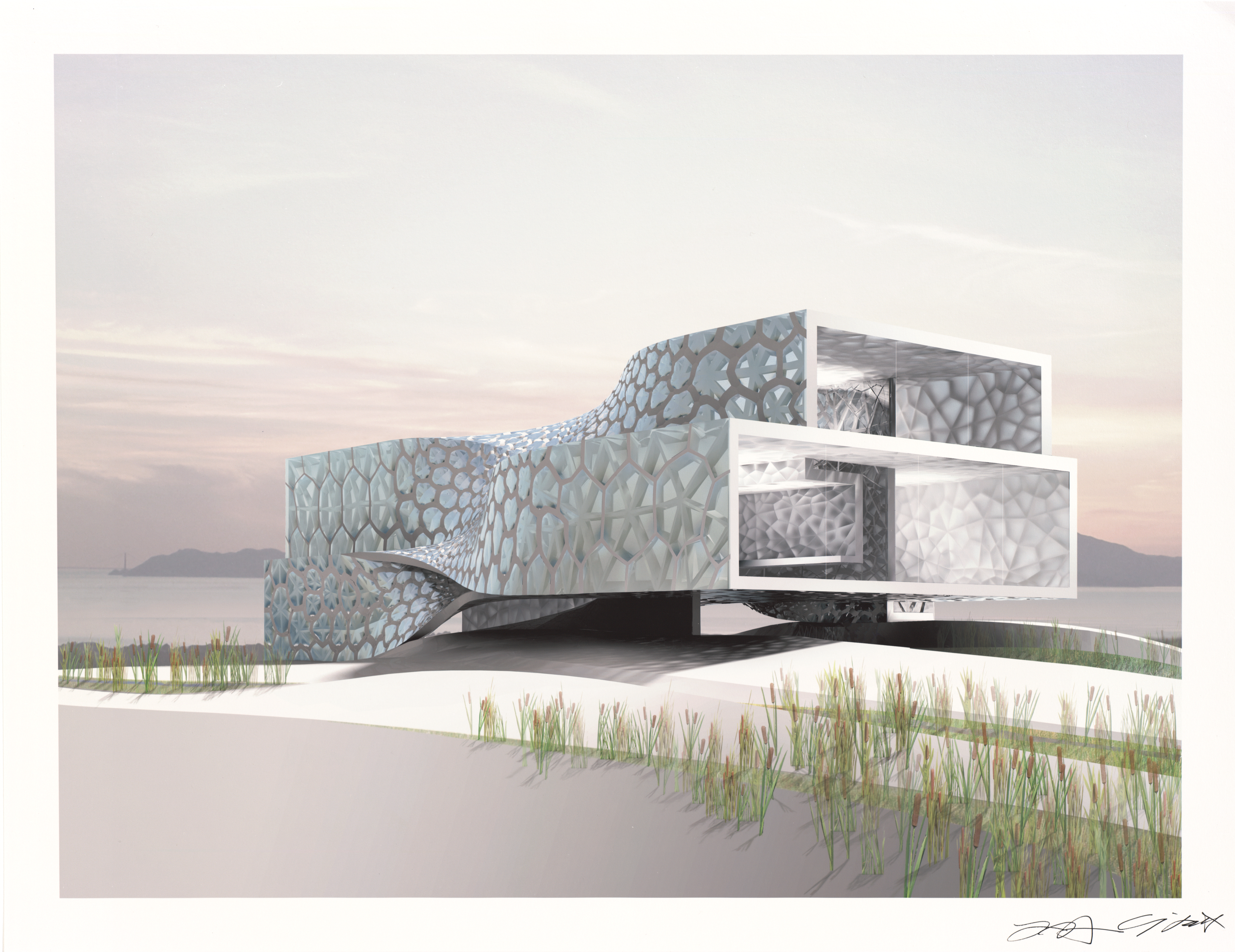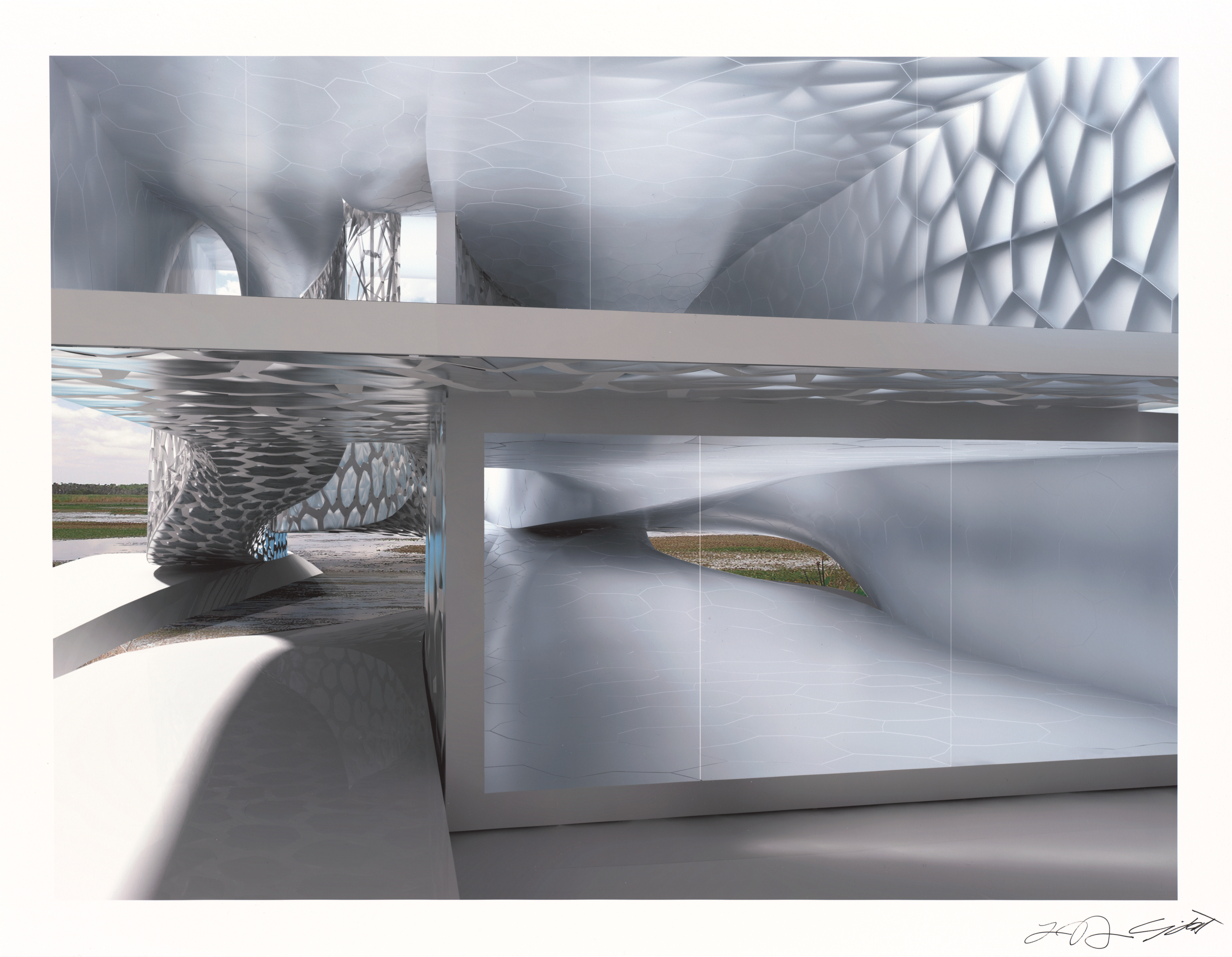Lisa Iwamoto and Craig Scott founded IwamotoScott Architecture (ISAR) in 2000. Both received their master of architecture degrees from Harvard University and taught at the University of Michigan before settling in the Bay Area. Iwamoto is associate professor of architecture at UC Berkeley’s School of Environmental Design, and Scott is associate professor of architecture at California College of the Arts in San Francisco.
Balanced between residential, institutional, and conceptual designs, IwamotoScott’s architecture is geared toward the future: their projects seem intended for a coming age. As interested in research and technology as they are in architectural forms, ISAR blend innovative materials and experimental approaches into their designs. Many of their projects, including their Hydro-Net concept for the San Francisco of the future and their Jellyfish House, designed to perch on Treasure Island, in the San Francisco Bay, aspire to reflect a seamless relationship between the built environment and the natural world. In these and other projects, structural elements function in multiple ways: a structure’s exterior may act as a water filtration system, or an interior wall may serve not only to divide but to illuminate a space.
 IwamotoScott Architecture with proces2, IwamotoScott Architecture, Lisa Iwamoto, Craig Scott, proces2Jellyfish House2005–2006
IwamotoScott Architecture with proces2, IwamotoScott Architecture, Lisa Iwamoto, Craig Scott, proces2Jellyfish House2005–2006 IwamotoScott Architecture with proces2, IwamotoScott Architecture, Lisa Iwamoto, Craig Scott, proces2Jellyfish House2005–2006
IwamotoScott Architecture with proces2, IwamotoScott Architecture, Lisa Iwamoto, Craig Scott, proces2Jellyfish House2005–2006